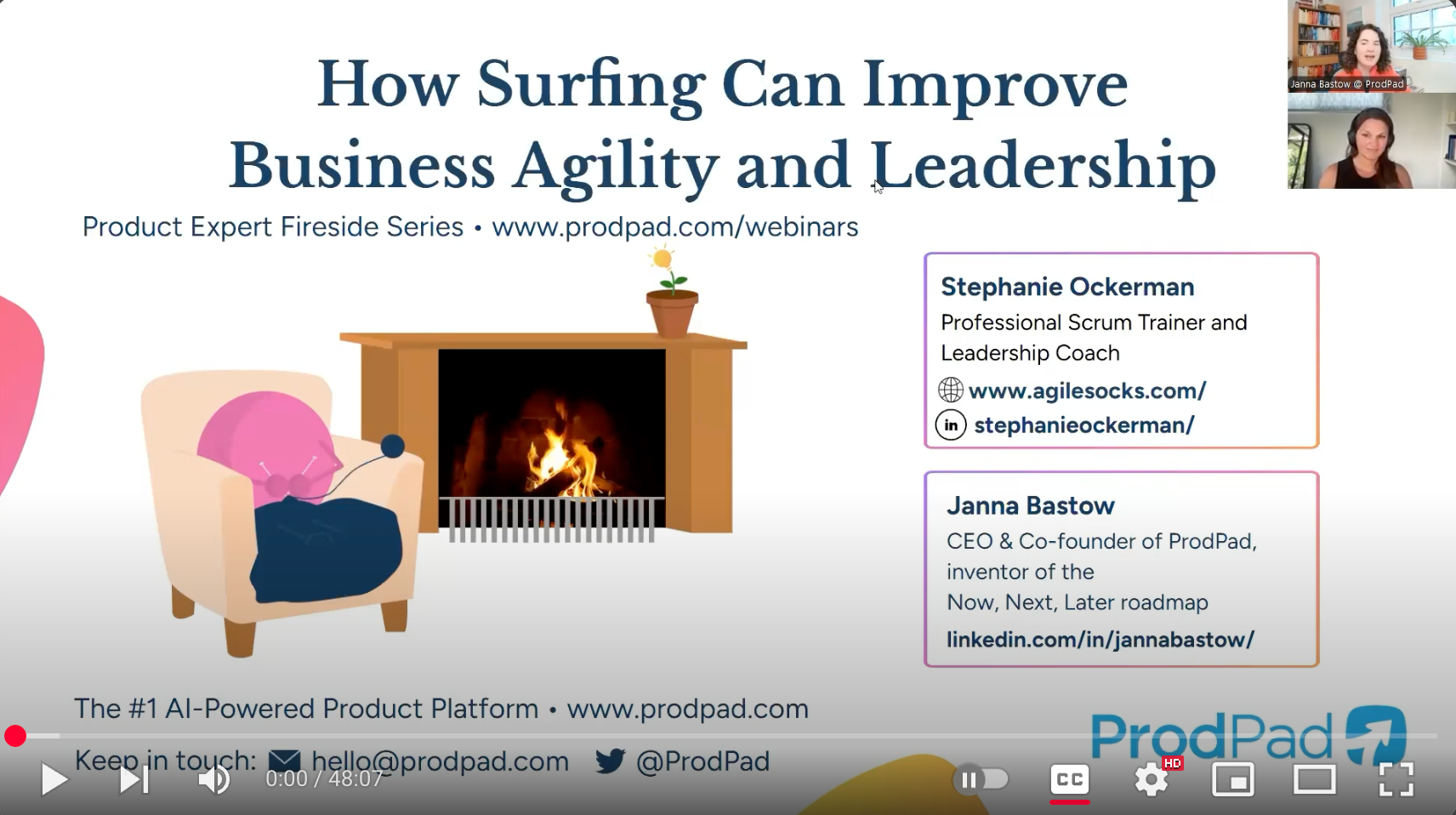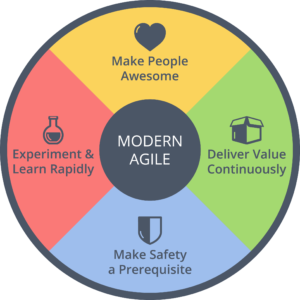
Last month at Agile2016 in Atlanta, Joshua Kerievsky gave a keynote talk about what he calls modern agile. He brings a different perspective and changes the language of how we think about agility in today’s world.
I agree with the principles of modern agile and the why behind them. Joshua brings up concerns that some of our original approaches to agility may be flawed, and we need to move beyond them in today’s world. Some of these concerns I agree with. Some of the concerns brought up are common misconceptions.
Today I want to share why I believe Scrum is a framework for enabling Modern Agile. I will also dispel a few misconceptions along the way.

Creative Commons via ModernAgile.org
Modern agile methods are defined by four guiding principles. I believe they carry forward the spirit of the Manifesto for Agile Software Development.
Scrum is a framework for helping people creatively and productively deliver products of the highest possible value. Let’s break this down into two ways Scrum makes people awesome.
Scrum leverages collaborative, self-managing teams and a spirit of continuous improvement to help the people creating the products be awesome.
When we teach Professional Scrum Courses we stress the importance of value. It’s not just about getting a product shipped. To effectively fulfill their role, Product Owners should be looking at whether or not the expected value was realized. Did we delight our customers by making them more awesome at what they do?
We need mechanisms in place to create safety on the technical side.
Are there automated tests that run when I check in code? Are we automating activities that are prone to error? Scrum does not prescribe the technical practices a team uses, however, we stress the importance of considering practices that help improve the baseline of quality for the product. This is part of a team’s Definition of Done and why we inspect it frequently and look for opportunities to expand and improve it.
Google conducted a study to learn the secret to high performing teams. Psychological safety was identified as key to success.
Scrum’s foundation of empiricism and the Scrum Values illustrate the importance of psychological safety. It is okay to make mistakes because we will learn from them. We will share the accountability for our outcomes and work together to improve. The Scrum Master focuses on the Scrum Team’s health and their effective use of Scrum, and psychological safety is a huge factor.
Safety is also important to our customers. They want to know their data is safe. They want to feel like they can rely on the product to work. Scrum’s focus on understanding what customers need combined with an expectation of high quality working software enables customer safety.
Scrum delivers additive, incremental value by operating in a series of short Sprints. Shorter Sprints allow more frequent feedback on the product and more frequent opportunity to change direction.
In Scrum, we take something big and break it down into something tiny that adds a lot of value.
Scrum provides the boundaries necessary for productive, creative experimentation and rapid learning while limiting our risk.
Joshua made a point that I disagree with – that we have moved beyond needing time-boxes. His point was made under the premise that we need to be able to do many frequent micro-releases in order to experiment and learn rapidly.
There is a common misconception that you cannot release until the end of a Scrum Sprint.
This is simply not true. Scrum Teams can do continuous delivery or release multiple times during a Sprint. The time-box of the Sprint helps ensure that we regularly take time to inspect the product with stakeholders and to inspect ourselves as a team.
In the Sprint Review, we want to collaborate with and get feedback from our stakeholders on the product to guide further development. In the Sprint Retrospective, we look for continuous improvement opportunities for our Scrum Team to get better. Ultimately, this continuous improvement cycle can help a team get to the point where they can do continuous delivery.
The cadence of a Sprint is also helpful for planning and forecasting, which is often important to many teams and organizations.
Another point Joshua made is about how story points and velocity have been used for evil.
I agree with this.
Unfortunately, he implied that story points and velocity are part of the Scrum framework. When I teach Professional Scrum courses, I always make it clear that the point of Scrum is not to deliver story points. The point of Scrum is to deliver usable Increments of value.
We must get beyond mechanical Scrum. We need to live the Scrum Values, have technical excellence, and have an agile mindset to maximize the benefits of Scrum.
If the modern agile principles are a way to help more teams and organizations get there, I am all for it.
As Joshua Kerievsky stated in his keynote…
“Real wisdom doesn’t get antiquated.”
That is why Scrum is Modern Agile.



AGILE SOCKS is a registered trademark of Agile Socks LLC. Other marks used herein are the property of their respective owners. For more information see Trademark Notice in Terms & Conditions.